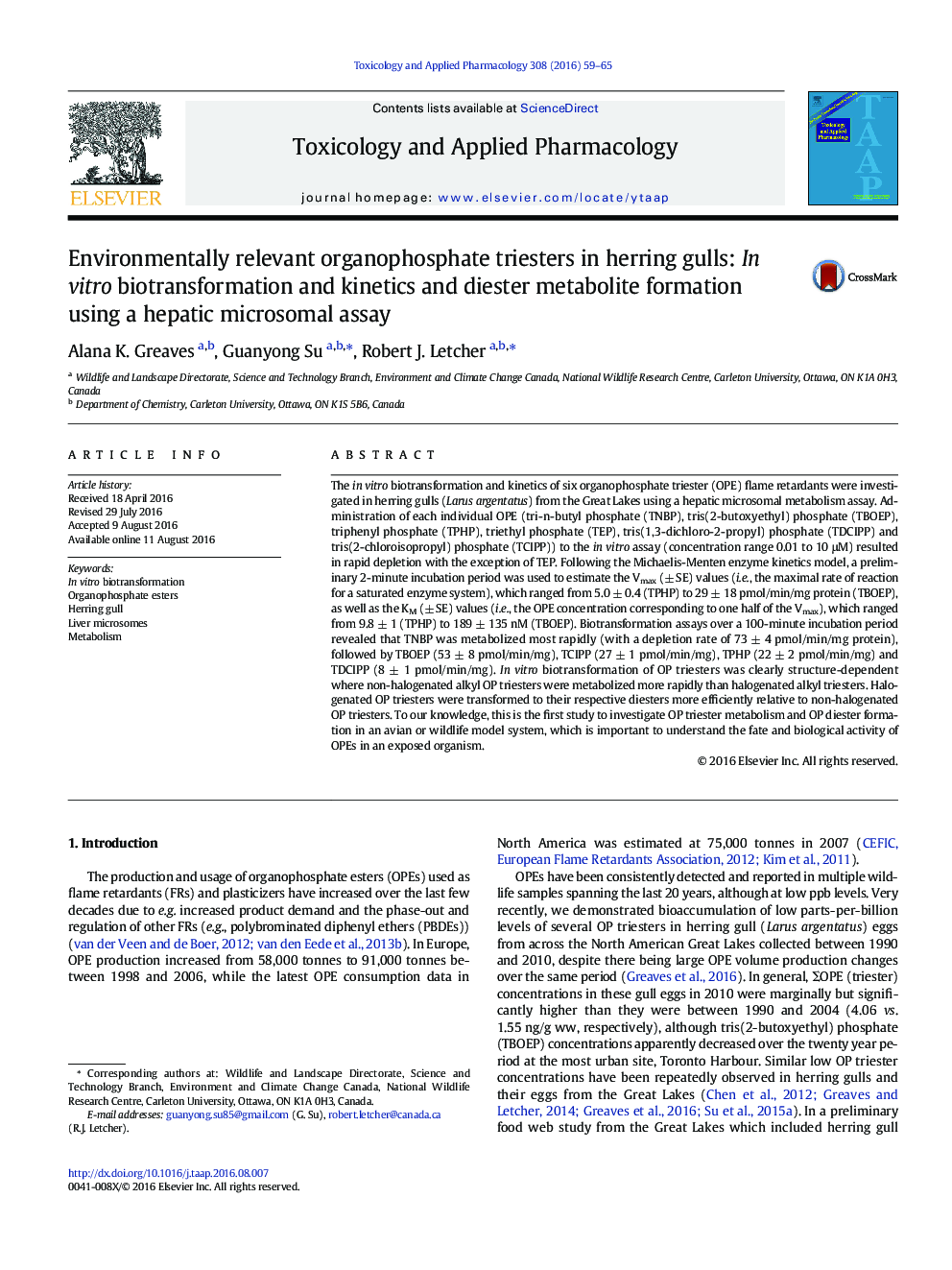| کد مقاله | کد نشریه | سال انتشار | مقاله انگلیسی | نسخه تمام متن |
|---|---|---|---|---|
| 2568039 | 1561154 | 2016 | 7 صفحه PDF | دانلود رایگان |

• The metabolism and kinetics of 6 OPEs were examined in herring gull liver microsomes.
• The metabolism of OPEs was rapid, with the exception of TEP (no metabolism observed).
• Relative metabolism rates (pmol/min/mg protein): TNBP > TBOEP > TPHP > TDCIPP > TCIPP.
• OPE metabolite (i.e., OP diesters) formation was shown for all 5 OP triesters.
• Structure-dependent metabolism rates and OP diester formation were observed.
The in vitro biotransformation and kinetics of six organophosphate triester (OPE) flame retardants were investigated in herring gulls (Larus argentatus) from the Great Lakes using a hepatic microsomal metabolism assay. Administration of each individual OPE (tri-n-butyl phosphate (TNBP), tris(2-butoxyethyl) phosphate (TBOEP), triphenyl phosphate (TPHP), triethyl phosphate (TEP), tris(1,3-dichloro-2-propyl) phosphate (TDCIPP) and tris(2-chloroisopropyl) phosphate (TCIPP)) to the in vitro assay (concentration range 0.01 to 10 μM) resulted in rapid depletion with the exception of TEP. Following the Michaelis-Menten enzyme kinetics model, a preliminary 2-minute incubation period was used to estimate the Vmax (± SE) values (i.e., the maximal rate of reaction for a saturated enzyme system), which ranged from 5.0 ± 0.4 (TPHP) to 29 ± 18 pmol/min/mg protein (TBOEP), as well as the KM (± SE) values (i.e., the OPE concentration corresponding to one half of the Vmax), which ranged from 9.8 ± 1 (TPHP) to 189 ± 135 nM (TBOEP). Biotransformation assays over a 100-minute incubation period revealed that TNBP was metabolized most rapidly (with a depletion rate of 73 ± 4 pmol/min/mg protein), followed by TBOEP (53 ± 8 pmol/min/mg), TCIPP (27 ± 1 pmol/min/mg), TPHP (22 ± 2 pmol/min/mg) and TDCIPP (8 ± 1 pmol/min/mg). In vitro biotransformation of OP triesters was clearly structure-dependent where non-halogenated alkyl OP triesters were metabolized more rapidly than halogenated alkyl triesters. Halogenated OP triesters were transformed to their respective diesters more efficiently relative to non-halogenated OP triesters. To our knowledge, this is the first study to investigate OP triester metabolism and OP diester formation in an avian or wildlife model system, which is important to understand the fate and biological activity of OPEs in an exposed organism.
Figure optionsDownload high-quality image (94 K)Download as PowerPoint slide
Journal: Toxicology and Applied Pharmacology - Volume 308, 1 October 2016, Pages 59–65